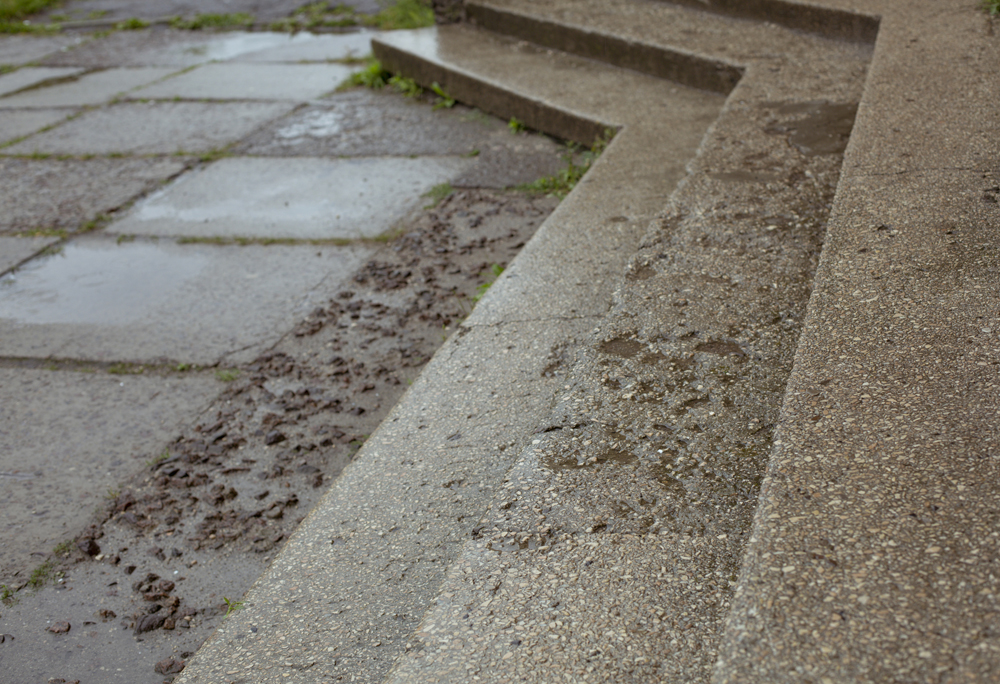Does concrete absorb water?

That nice new slab of concrete looks pretty good right now, doesn’t it? But fast forward a few years and it might not. Depending on the environment in which it’s installed, the ratio of ingredients in the mix, the time allowed for it to dry when poured, and many other factors, that concrete can chip, crack, and crumble over time.
And it all has to do with water.
Water, water everywhere
Water is an essential part of the process of making concrete—it has to be in the mix originally, and no slab is really ever one hundred percent dry. At some point it will reach an equilibrium where the tiny fraction of a percent of water left behind is evenly spread throughout the slab, but that’s only if it doesn’t absorb water from elsewhere.
When concrete is originally formed, the water migrates out through the concrete mixture. It leaves the surface of the concrete and evaporates into the air. Often, though, it takes longer for that moisture to leave than people think. Even if the surface is dry, the interior of the slab may not be. This can cause problems down the line as the water vapor works its way up.
Letting the outside in
When concrete is dry and not sealed, it can absorb some water the same way that water escaped in the drying process. Humid environments, rain, and standing water are obvious threats. Sealing helps, but cracks exist in most concrete, and over time water can work its way in.
In outdoor installations, the freezing and expanding process can cause cracks to expand to the point that they pose a threat to the structural integrity of the concrete itself. Sometimes very small cracks can heal themselves by leaching calcium hydroxide from the surrounding concrete into the crack and sealing it up, but it’s not something you can rely on.
Joints are also common fail points, because they’re designed to be split. Moisture can work its way into a joint much more easily than it can elsewhere.
In addition, without sealing or moisture barriers, concrete can bring up moisture from below. That moisture can work its way up through the concrete and wreak havoc on the surface, which is both a cosmetic issue and a potential safety issue. This process may not be immediately noticeable because the water doesn’t tend to pour out of concrete like it would from a porous sponge. But it does migrate through.
While water absorption can cause serious issues for concrete, there are ways to mitigate it. If you’re concerned about your concrete absorbing water, contact JK Industries, Inc. to see if our services are right for you.
